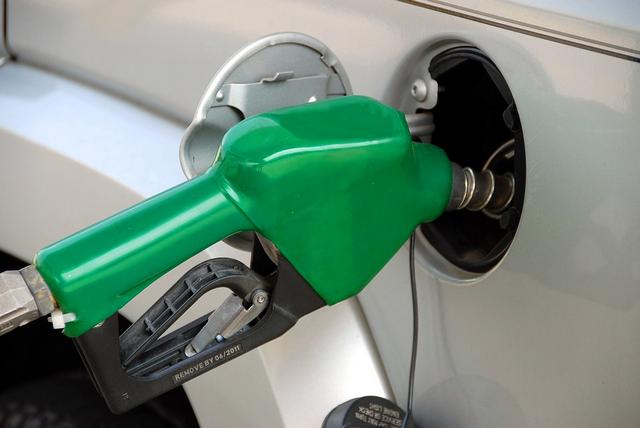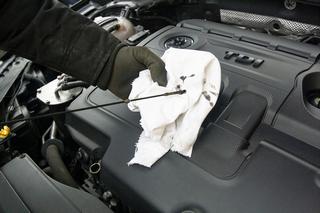How To Get Better Gas Mileage in a Ford F150?

One thing Ford cares about is customer experience! The auto company is always working on improving its truck engines so that customers get real value for their money. An ideal truck engine is powerful and reliable any time, any day.
If you own a Ford 150 truck and wondering how to get the most gas mileage out of it, I’m here to show you the step-by-step approach. Below is a quick rundown of what to do to get better gas mileage in a Ford F150.
- Watch your driving style,
- Only using A/C while on the highway,
- Using the right octane,
- Removing the rooftop carrier,
- Turning off the engine while waiting, and
- Checking the technical condition of the truck.
To help you learn more about getting better gas mileage, I’ve put together this guide, and I believe you’ll find it useful. So, without much ado, let’s take a deep dive right in!
Ford 150 MPG Information and the Most Efficient Engine
The two main F150 modern engines are the 2.7L EcoBoost and the 3.5L EcoBoost first and second generations. The 2.7L first generation has a fuel consumption of 19 city/26 highway/22 combined mpg for 4×2 and 18 city/23 highway/20 combined mpg for 4×4.
On the other hand, the 3.5L has a fuel consumption of 17 city/24 highway/20 combined mpg for 4×2 and 17 city/23 highway/19 combined mpg for 4×4. The 2.7L second generation has a fuel consumption of 20 city/26 highway/22 combined mpg, while the 3.5L has a fuel consumption of 18 city/25 highway/21 combined mpg.
So, here’s the bottom line: a higher MPG means more fuel efficiency. Therefore, since 2.7L has a higher MPG, it’s more efficient in fuel consumption while driving in the city or the highway.
Read also: 2.7 vs 3.5 EcoBoost Ford Engines
What Affects Fuel Consumption
The range you can cover or the tasks you can accomplish while driving your F150 truck depends on the fuel consumption rate. F150 engines are pre-built to offer fuel economy so that you get to your destinations on time and with minimal struggle.
Nonetheless, you can always go above and beyond the average by being a little bit extra in your driving technique and varying your truck’s technical aspects. Now, perhaps you’re thinking, “what do I mean by that?”
Below are the things that affect fuel consumption and how to turn them around in your favor for better gas mileage.
1. Driving Style
Aggressive driving consumes a lot of fuel, especially on highways. To improve your engine’s fuel efficiency, you’d have to watch out for your driving style. Smooth acceleration, braking, and sticking to one lane are awesome ways to reduce excess fuel consumption.
Some of these, like sticking to a single lane, is hard to adhere to; however, the best you can do is minimize the frequencies. For example, you can try switching to other lanes only when it’s necessary. Also, you can go for smooth braking by avoiding emergency braking.
2. Only Using A/C on the Highway
Using the air conditioner (A/C) while driving at low speed consumes a lot of fuel. If the weather is favorable, it would be better to turn it off, roll down the windows and let in fresh, natural air. On the other hand, while driving at high speeds of 55 mph and higher, you can have the AC on.
At these speeds, the wind is a significant course of vehicle resistance. The more there’s resistance, the more the truck will be consuming fuel. But that’s precisely what we’re trying to avoid here. It’s, therefore, better to close the windows and turn on the A/C for air conditioning.
3. Using the Correct Octane
It’s recommended to only use the correct octane as per the manufacturer’s instructions. If you don’t know how to go about this, you don’t need to second guess anything. This information is freely and readily available on your truck guide. The correct octane is neither more nor less but adequately sufficient. This is what your truck needs for efficient fuel consumption.
4. Removing the Rooftop Carrier
A rooftop carrier acts as a barrier, creating more air resistance. If your truck has to push through a lot of resistance while in motion, fuel consumption would also go up. To avoid this, it’s better to remove the rooftop carrier and probably have it when it’s necessary. Alternatively, you can decide to only transport luggage inside the truck.
5. Turning off the Engine While Waiting
It’s best to turn off the engine while waiting for someone or when having a rest after a long period of driving. Besides, you need to do this more if you’re certain the vehicle will be in parking for a while. Seriously, there’s no need to keep the engine on when it’s not in use.
Doing this regularly will help you save a significant amount of fuel every time you go out or come back home after running errands. More importantly, you need to turn off the engine if you have the 6 or 8 cylinder engine type. This is because they’re known to consume more fuel when idle.
6. Technical Condition of the Truck
 You need to ensure your truck is in the best technical status if you want to save fuel consumption. For example, the tires need to be adequately inflated for smooth handling and durability. With properly inflated tires, you won’t be spending much time on the roads.
You need to ensure your truck is in the best technical status if you want to save fuel consumption. For example, the tires need to be adequately inflated for smooth handling and durability. With properly inflated tires, you won’t be spending much time on the roads.
Also, you can improve fuel efficiency by replacing malfunctioning oxygen sensors. A key symptom of a defective oxygen sensor is bad gas mileage. Therefore, once you notice a problem with your normal mileage, replacing the sensors could save the day.
Other symptoms include a failed emission test, an engine sounding rough, and a glowing bright orange check engine light on the dashboard. Once you notice these signs, it would be a good idea to replace the oxygen sensors to achieve a higher gas mileage.
You want to make sure your truck’s air filter is ever cleaned and regularly maintained. A dirty one is less effective and doesn’t let in enough air into the engine. Eventually, this affects engine performance and can potentially reduce gas mileage.
According to an Investopedia report, a bad spark plug can decrease fuel economy by up to 30%. When this happens, your truck’s gas mileage also drops significantly. Therefore, it’s a good practice to replace your spark plugs whenever you notice any anomalies.
F150 Mods for Better Mpg
Below are the F150 mods that can help you with fuel efficiency and better gas mileage.
Custom Engine Tuning
Tuning your truck properly helps improve gas mileage by 4%. Regular tune-ups help improve the engine’s ability to burn fuel, thereby enhancing efficiency. Tuning helps in balancing variables of air and gas for optimum engine performance. Instead of going out to find one of these tuners on your own, here’s one recommendation that I believe you’ll find helpful.
Superchips Flashcal F5 In-Cab Tuner
This Ford performance programmer is reliable and is one of the finest industry hand-held tuners. This is the tool you’ll need to optimize your truck’s engine for its peak performance.
Compatibility
This custom engine tuner is compatible with 1999 to 2019 Ford diesel and gasoline engines. As you can see, the range is vast and accommodates all ford trucks within this period. Besides, it’ll work perfectly well with both diesel and gasoline engines. So, if you have trucks with these engines, only one tuner will be sufficient to handle the work.
The tuner is also compatible with the 3.5L EcoBoost, 5.0L Cayote, and the 6.7L power stroke motors. Again, this gives you multiple engine options to use the tuner with. Since you won’t need to buy a tuner for each engine, you’ll end up saving some bucks for other use.
Display
The tuner features a colored 2.8-inch display screen. The screen is large enough for enhanced usability, and with the high definition graphic feature, all the functionalities are clear and easy to read even from far.
Functionality
Compared to other tuners, this one has a high memory capacity with a fast processing speed. This helps in improving tuning and updating speed, making the tool more efficient. Most importantly, you’ll get improved horsepower, torque, and fuel economy with this tuner.
Pros
- Easy to use.
- Compatible with Ford, Lincoln, and Mercury.
- Multi-functional and can be used to improve horsepower, torque, and fuel economy.
- Reliable for enhancing engine efficiency.
Cons
- Not available for 2015-UP export F-150 models.
Mods
Cold air intake
This is the way to go if you want more engine power. Factory air intake systems are created mainly for noise reduction. Because of this, it’s advisable to replace the factory air intake system with a high-flow cold air intake system.
This system is more effective and helps boost engine performance by letting in cold and denser air into the truck’s engine. Since the air is rich in oxygen, it makes the engine more powerful and effective, hence a better fuel mileage.
Custom exhaust
Next, after working on the airflow, you want to ensure the entire system, including the exhaust, is in good shape. An effective exhaust system helps get out the exhaust gas so that the truck remains more effective and functional.
Using a custom exhaust instead of the factory’s is more convenient in two ways. One, it’s got a large pipe which helps in eliminating a lot of the exhaust gas. And two, its mufflers are specialized and useful in draining the exhaust system. Overall, a custom exhaust system helps in getting better gas mileage by enhancing your truck engine performance.
Bed Tonneau Cover
A tonneau cover is used to cover the top open area of a truck bed. Covering helps to protect cargo from solar damages or other weather elements such as rain and snow.
Expert reports posit that you can get better gas mileage by installing a bed tonneau cover on your F150 truck. This cover helps in reducing the aerodynamic drag, which in turn increases gas mileage by 10%. If you don’t have one yet, it’s time you installed it on your truck.
Conclusion
Getting a better gas mileage in a Ford F150 is pretty simple. You only have to watch your driving style, only use A/C while on the highway, use the right octane, remove the rooftop carrier, turn off the engine while waiting, and check the truck’s technical condition.
If you follow this guide, you’ll be on your way to achieve high engine performance, fuel efficiency, and better gas mileage.